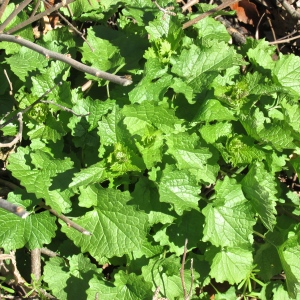One of the pleasures of spring restoration work is weeding garlic mustard from the edges of the prairie. When you’re on your knees in the dirt, a universe opens up that you might otherwise miss.
Like these celandine poppies with their furry buds opening. What other surprises, you wonder, are out there to be discovered?
All spring, my volunteer team and I weed garlic mustard in transition zones around the prairie proper. These areas are full of a wild mix of woodland, prairie, and oak savanna species. There are also surprises, such as escaped garden flowers —- tulips, daffodils, and scilla —left from when people lived on the edge of the former farm, where the Schulenberg Prairie is today.
Garlic mustard is our arch-enemy. Tenacious. Invasive.
We dig it out. Although it’s edible in small amounts, no one gets too excited about that, maybe because I once mentioned that garlic mustard contains tiny amounts of cyanide. It took the edge off of everyone’s appetites.
Removing garlic mustard makes room for the native wildflowers to grow; prairie, savanna, and woodland become healthier. Right now, on the edges of the Schulenberg Prairie, we’re seeing a lot of traditional woodland bloomers.
Virginia bluebells play their music in light shade.
Dutchman’s breeches hang their pantaloons out to air by Willoway Brook.
Wood anemones send up their solitary blooms. In the Victorian Language of Flowers, to give someone a wood anemone was to tell them you felt “forsaken.” The single white flowers do look a bit lonely, don’t they?
Cut-leaved toothwort (left) and prairie trillium (right) are two friendly companions of the light woods. Toothwort has namesake toothy nodules on its rhizomes, and was purported to be good for toothache because of this resemblance. The deep burgundy prairie trillium is sometimes known as “trinity flower,” with its trio of dappled leaves.
I love the trout lilies: both the white and the yellow. The yellow ones are smooth as butter; bright as sunshine.
While the yellow ones are a bit difficult to find, the white trout lilies mass everywhere by the prairie — vast colonies, thousands of them, like a grassy Milky Way Galaxy. A universe of beautiful surprises.
All this and more, waiting to be discovered… while on our knees, weeding garlic mustard.
(All photos by Cindy Crosby from the Schulenberg Prairie edges at The Morton Arboretum in Lisle, IL. Top to bottom: Trail bordering the prairie and prairie oak savanna; celandine poppy (Stylophorum diphyllum); garlic mustard (Alliaria petiolata) ; Virginia bluebells (Mertensia virginica); Dutchman’s breeches (Dicentra cucullaria) ; wood anemone (Anemone quinquefolia); cut-leaved toothwort (Dentaria laciniata) and prairie trillium (Trillium recurvetum); yellow trout lily (Erythronium americanum); white trout lilies (Erythronium albidum).










I cannot wait to retire in 2016 and join you in the garlic mustard battle. The rewards sound wonderful!
LikeLiked by 1 person
I saw a jack in the pulpit yesterday at Herrick, but my pictures were blurred. Need to get back and capture it before it’s gone. Love this article: you identified a flower I was wondering about – the cenlandine poppy! Thanks, Cindy!
LikeLiked by 2 people
We have most of these in our yard/woods presently. Love to discover them!!
LikeLiked by 1 person
Great to see these emerging prairie blooms!
LikeLiked by 1 person
Never even knew about celandine poppies – I’ll have to look for them. Your bluebell picture is fantastic! And “grassy Milky Way” is so poetic. I love finding out all of the little stories of the plants, or why they are named as they are.
LikeLiked by 1 person